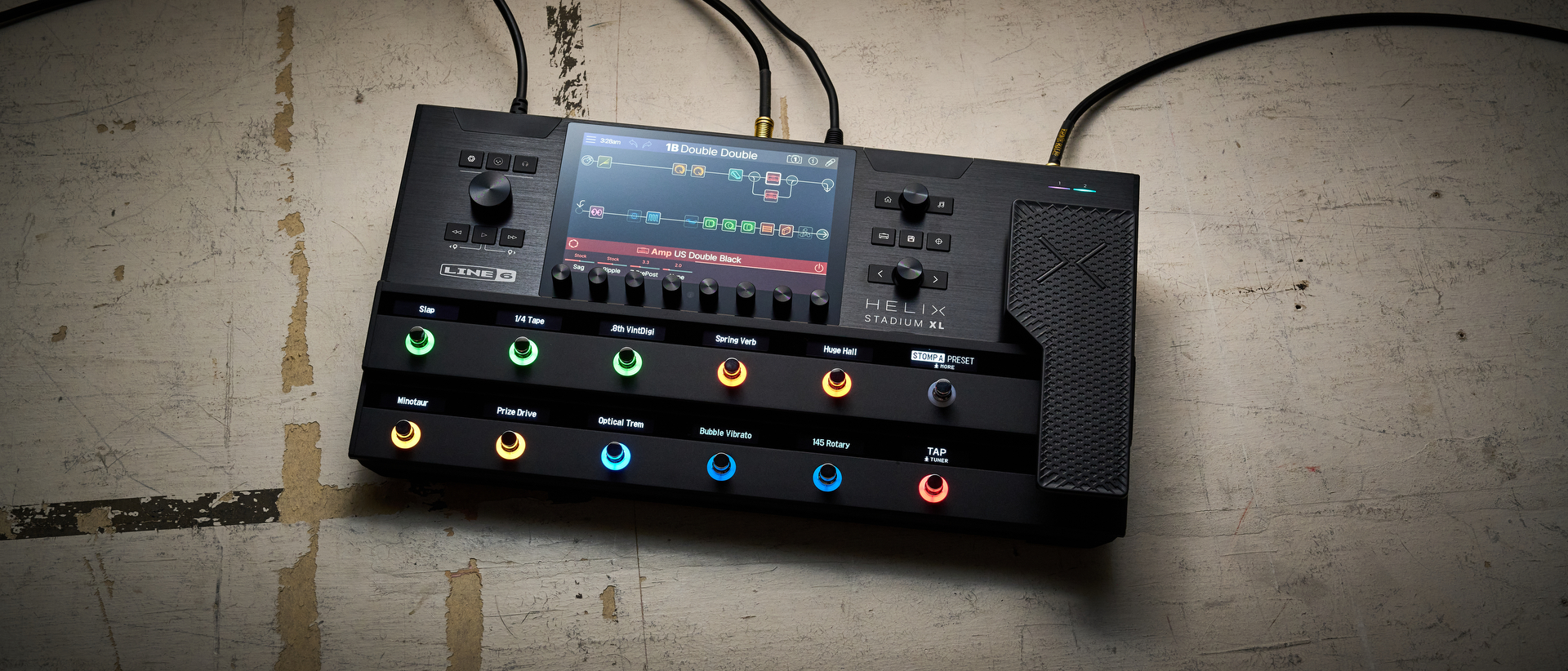

Sure, Jimi Hendrix was known for being a strange, outta-sight cat and a wild, eccentric guitarist. But look past all the psychedelic mayhem and you’ll find some of the most beautifully melodic, rhythmically complex, and harmonically uncanny solos in rock. “Purple Haze” may feature some of the most fuzzed-out sounds on the planet but it also boasts a mini-masterpiece of an introduction as well as an E-Dorian solo to die for. “Third Stone From the Sun” is about as psychedelic as it gets but it also contains one of the most memorable octave riffs in the annals of rock. Hendrix could also tear your heart out with romantic single-string melodies, such as those in “May This Be Love,” or take you to faraway places with silky-smooth lines like those in “All Along the Watchtower.” And don’t forget, Hendrix could turn a blues phrase like no other—witness “Red House,” “Voodoo Chile,” and “Rainy Day, Dream Away.” Let’s take a look at a few of Hendrix’s soloing concepts, then put them together in an extended solo.
Double Stops
- Some of Hendrix’s most brilliant lead work lies in his double-stop-based R&B solos and fills, found in such songs as “The Wind Cries Mary” (Are You Experienced), “Castles Made of Sand” (Axis: Bold as Love), and “Little Wing” (also from Axis). Fig. 1 is an example of his chord-tone approach over a I–ii–vi (G–Am–Em) progression in the key of G.
Staying exclusively within the G major scale (G–A–B–C–D–E–F#), the example intersperses adjacent-string dyads with single-note lines. Notice the liberal use of grace-note hammer-ons and pull-offs, which tend to involve the 9th, 6th, and 4th of their corresponding chord.
The “Hendrix Minor Scale”
Hendrix often used the minor pentatonic (add2) scale (1–2–b3–4–5–b7). Fig. 2 employs the C# minor pentatonic (add2) scale (C#–D#–E–F#–G#–B) in an example that calls to mind the bendy, blues-soaked lines that pepper “All Along the Watchtower” (Electric Ladyland). Make sure you hit the exact pitches on the double bend/release move; look out for the 1 1/2-step bend that proceeds the full-step bends. Fig. 3 is inspired by a bluesy section of the “Purple Haze” solo (Are You Experienced), in which Hendrix employs the E minor pentatonic (add2) scale (E–F#–G–A–B–D). Catch those F#–D pull-offs with your 4th and 1st fingers.
Octaves and Finger Grease
Hendrix often achieved a massive sound by using octaves, as well as ringing open strings. Fig. 4 makes use of both techniques in an example inspired by “Third Stone from the Sun” (Are You Experienced). Be sure to mute the string that lies between the octaves with the underside of your fret hand’s 1st finger, at the same time letting the appropriate open string(s) ring.
All the latest guitar news, interviews, lessons, reviews, deals and more, direct to your inbox!
Fig. 5, a nod to the solo from “May This Be Love” (Are You Experienced), demonstrates Hendrix’s legato single-string work. Although the line is faster than greased lightening, the savvy rhythmic phrasing allows for the melody to come shining through. Definitely use the suggested fret-hand fingerings.
The Solo
The solo [Fig. 6] is inspired by songs such as “Angel” (Electric Ladyland), “Little Wing” (Axis: Bold as Love), “Hey Joe,” and “The Wind Cries Mary” (the latter two from Are You Experienced). Its progression weaves through a series of major-chord changes (C, Bb, G, and F), interlaced with minor chords (Am) and chromatic passing chords (B). To approximate Hendrix’s bluesy R&B sound, use your neck pickup and dial in just a hint of crunch.
The solo opens with a staple of Hendrix’s style—a series of sliding 4ths. Notice how the 4ths segue to 3rds at the end of the first measure (Bb/F moves to Bb/G; C/A; and B/G). As these types of maneuvers are challenging to the fret hand, be sure to strictly follow the fingering suggestions. The double-stop action in measure 3 mixes memorable moments from “Little Wing” and “The Wind Cries Mary.” Beginning with a slurred cascade down the A minor pentatonic (add2) scale (A–B–C–D–E–G), the passage segues to a pair of inverted triads (3–5–1: D–F–Bb and D#–F#–B, respectively) to nail the chromatic changes (Bb–B). Don’t overlook the shift from shuffled to straight 16th notes—a subtle hallmark of Hendrix’s style.
Slipping back to shuffled 16ths, measure 4 exemplifies Hendrix’s countrified-conversion method: the juggling of harmonic 4ths and 3rds with hammer-ons and pull-offs. For example, a 4th (D/A) is transformed into a minor 3rd (D/B) and back again via a hammer-on, from A to B, and a pull-off from, B to A.
The pedal-point-triple-stop action at the top of measure 5 is based on C (C–E–G), Csus4 (C–F–G), and Bb (Bb–D–F) triads. Visualizing these voicings before you play them will help your fingers target the right notes. Don’t be afraid of the 16th-note triplets in measure 6. Carved from a finger-friendly, 12th-position G-major pentatonic (G–A–B–D–E) pattern, this passage is relatively easy to manage—until you get to the pedal-steel bend. There, keep your 3rd finger planted across the top two strings as you bend the G string to pitch with your 2nd finger. Alternatively, you could barre the top two strings with your 4th finger and bend the 3rd string with your 3rd finger, reinforced by your 1st and 2nd fingers.
Bluesy bends, based on the E minor pentatonic (E–G–A–B–D) and Bb major pentatonic (Bb–C–D–F–G) scales, take on the somewhat challenging Am–Bb–F changes in measure 7. Try to keep the G and B strings parallel as you execute the quarter-step, double-stop bend.
Hendrix was a true bluesman, as exhibited in the aggressive moments of measure 8. Here, G major pentatonics overlap with the G blues scale (G–Bb–C–Db–D–F) in a fiery burst of slides, bends, and hammer-ons. Following this outburst, the solo winds down on a direct quote from the main riff of “The Wind Cries Mary” and closes with a gospel-approved “Amen” phrase.
A Musicians Institute teacher since 1989, Tom Kolb has published many books on guitar technique and been featured in instructional DVDs by Hal Leonard. He is also the author of the Soloing Strategies column in Guitar World magazine.

